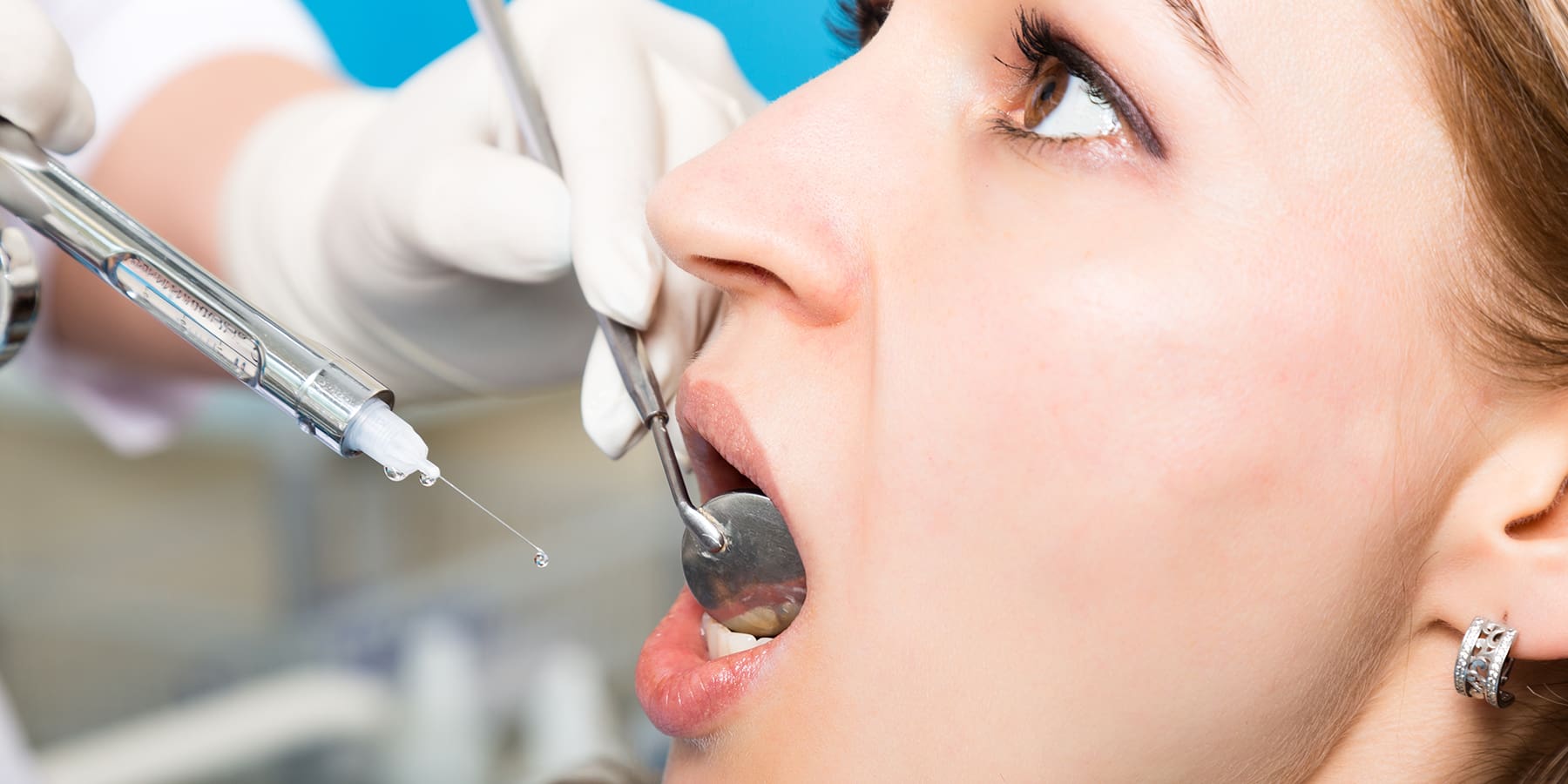
Reviewed by Dr. Matthew Young, DDS
Reading time: Three minutes
When dental plaque is not cleaned away, it hardens into tartar. Over time, the tartar can grow so thick that it forms a calculus bridge across several teeth, increasing the risk of gum disease, tooth decay, and even tooth loss.
In this blog, you will learn what a calculus bridge is, how it develops, the risks it poses, and the treatment options that protect your oral health.
Table of Contents
- What is a Calculus Bridge?
- Risks Linked to a Calculus Bridge
- How is a Calculus Bridge Removed?
- Prevention Is Key
- Protect Your Smile With Professional Care in San Francisco
- FAQs
Key Takeaway
A calculus bridge is a thick layer of hardened tartar that connects multiple teeth. It develops from long-term plaque buildup and can lead to gum disease, receding gums, tooth decay, and even tooth loss. A professional cleaning and consistent dental hygiene are the only ways to remove and prevent it.
What is a Calculus Bridge?
A calculus bridge is a solid mass of hardened tartar that spans across teeth. Dental plaque, the sticky film of bacteria on your teeth, hardens into tartar when not removed through daily oral hygiene practices like brushing and flossing. Over time, tartar can grow so thick that it connects several teeth together, forming a “bridge.”
This condition doesn’t appear overnight. It builds up over months or years of missed dental checkups and poor oral hygiene.
Main causes include:
- Inconsistent brushing and flossing: Dental plaque left behind hardens into tartar.
- Skipping dental cleanings: A professional cleaning is the only way to remove hardened calculus.
- Dry mouth: Reduced saliva makes it easier for bacteria to thrive and increases plaque buildup.
- High-sugar diet: Sugar feeds bacteria, raising the risk of tooth decay.
- Smoking: Tobacco accelerates tartar formation and worsens gum disease.
| ⚠️ Important Tip: Never try to scrape off tartar at home. Doing so can damage your enamel and gums. Always see a dental professional for safe removal. |
Risks Linked to a Calculus Bridge
Leaving a calculus bridge untreated can lead to severe dental problems that threaten your oral health. Possible risks include:
- Gum disease: Tartar irritates the gums, causing gingivitis, receding gums, and periodontal disease.
- Tooth decay: Bacteria trapped under calculus can erode tooth enamel and expose tooth roots.
- Bad breath: The buildup harbors odor-causing bacteria.
- Tooth loss: Advanced gum disease caused by tartar weakens bone and leads to loose teeth.
- Aesthetic concerns: Thick tartar stains teeth, making them look unhealthy.
How is a Calculus Bridge Removed?
A calculus bridge is too hard and firmly attached to the teeth to be removed with brushing or flossing at home. The only safe and effective way to eliminate it is through professional dental treatment.
Dentists and hygienists use specialized tools to carefully break apart and scale away the hardened tartar. In more advanced cases, a procedure called root planing may also be needed to smooth the root surfaces and help the gums heal. Regular cleanings afterward keep new buildup from reaching the same severity.
If you want to see what the process looks like, watch this short calculus bridge removal video.
Prevention Is Key
Preventing calculus bridges is far easier than treating them.
- Brush twice daily with fluoride toothpaste.
- Floss once daily to remove dental plaque between teeth.
- Rinse with an antibacterial mouthwash to limit bacteria.
- Drink plenty of water to maintain saliva flow.
- Schedule regular dental visits and professional cleanings.
Protect Your Smile With Professional Care in San Francisco
At Post St Dental Group, we help patients prevent and treat calculus bridges with thorough cleanings and personalized care. Whether you need a routine checkup or advanced treatment like scaling and root planing, our team is here to restore your oral health and protect your smile.
To book an appointment at our dental office in San Francisco, CA, call (415) 986-4534 or visit us at 490 Post St Suite 520, San Francisco, CA 94102.
FAQs
The only safe way is through professional cleaning. Do not try to remove a calculus bridge yourself.
Removing calculus is not usually painful. If you have tender gums or advanced buildup, your dentist can numb the area to make sure you stay comfortable during treatment.
Post St Dental Group is located just steps from Union Square in San Francisco and welcomes new patients for preventive, restorative, and cosmetic dental care.
